
Dr Lipi Begum, Subject Leader in Fashion Marketing and Branding, London College of Fashion
This photo essay illustrates the Jamdani Project, a journey of intergenerational and transnational learning through making, creating and playing. This project was initiated by the not-for-profit social innovation organisation The Muslin Trust and the Outreach Team at the London College of Fashion with funding from Awards for All and Big Lottery Fund England. The project bought together young students (aged between 16 and 18) from diverse communities across London and invited them into LCF’s fashion studios at Mare Street (in east London) to experiment and engage with sustainable fashion and textiles.
sustainable fashion, muslin, transnational, photo essay, Jamdani, luxury
Jamdani is a special weaving technique applied to the most luxurious muslin fabric. Muslin is fine cotton, so delicate it is often referred to as being woven from air. Its origins emanate from Dhaka (Bengal) and in the sixteenth and seventeenth-century muslin was traded all over the world, up and down the ancient ‘Silk Road’ trade route, which connected people and cultures in Europe and Asia (Ashmore, 2012; Bassett, 2001). Along the Silk Road people rarely had a shared language but fabrics like muslin often helped to create common understandings and even, dreams (Smithsonian Institute, 2002). The connections created by shared community – of ideas traversing borders – informed our approach to inclusive learning: an ethos embedded into this project. We wanted to connect tutors and students from diverse backgrounds and through the common language of Jamdani, to encourage them to share their creativity and future aspirations with one another.
From the outset this project adopted a collaborative approach that involved everyone working together. Over the course of ten weeks students learnt about the unique processes of Jamdani weaving and were encouraged to look at ‘sustainability’ and ‘luxury’ from an intergenerational and transnational perspective. This involved them learning artisan hand-sewing and cutting techniques that have been passed down over generations. They studied and worked with two pieces of Jamdani fabric, woven in the village of Rupshi in Dhaka. This process allowed them to engage and understand the rich history of muslin fashion shared by Europe and South Asia. Students were then encouraged to discuss ideas and experiment with the fabrics in order to design two hand-sewn evening gowns, inspired by Regency fashion in the late eighteenth and nineteenth-century as well as more accessible influences associated with this time, such as the novelist Jane Austen (Ashmore, 2012; Bassett, 2001).
The project culminated with a reception, held at Mare Street on 14 November 2015, where the students showcased their dresses and portfolios to tutors, friends and parents. Those who took part in the project have continued to pursue their passion for crafts and textiles through work in industry, higher education and research projects. The project also gained coverage in the local press (in Hackney Today and East End Life) and the dresses are due to be showcased again in February 2016, at the Muslin Festival hosted by the National Museum of Dhaka in Bangladesh.
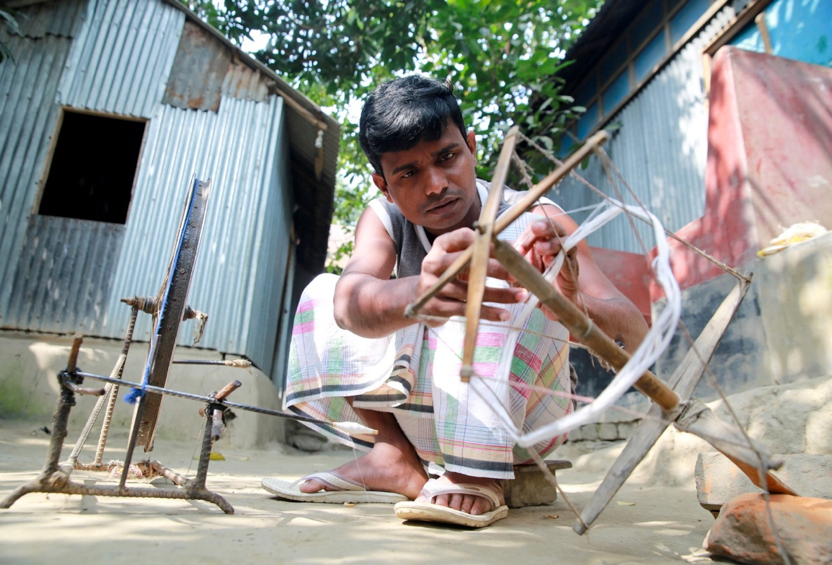
Figure 1: Master-weaver Jabbar in Rupshi, a village known for Jamdani (Dhaka, Bangladesh), whose skills were passed down to him by his parents and grandparents.
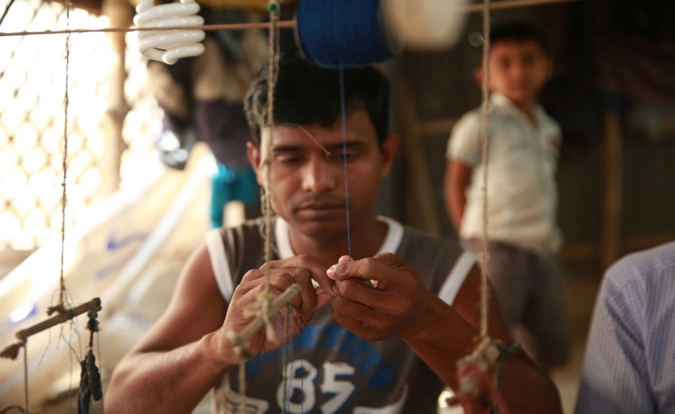
Figure 2: To create the Jamdani weave, Jabbar uses a bamboo splinter (as one would a needle) to combine weaving, embroidery and ornamentation.
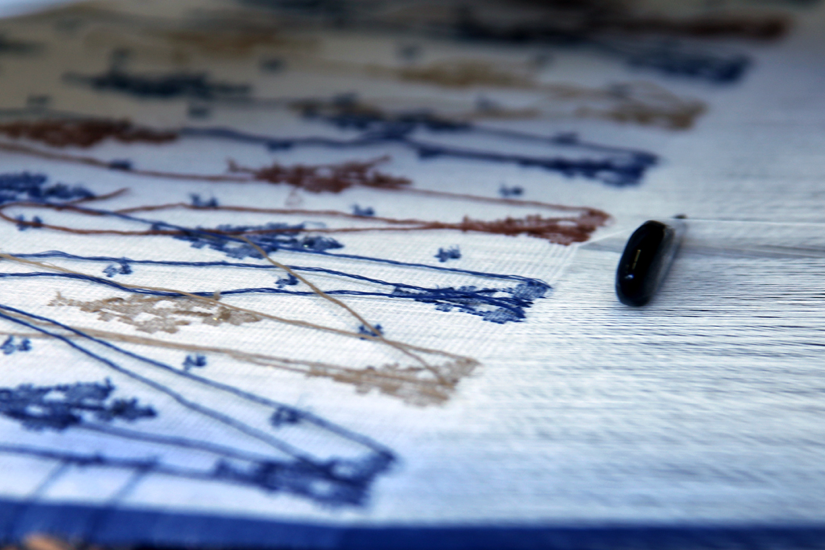
Figure 3: The Jamdani cloth’s pattern motif was woven using natural-dyed indigo thread, made on a traditional handloom.
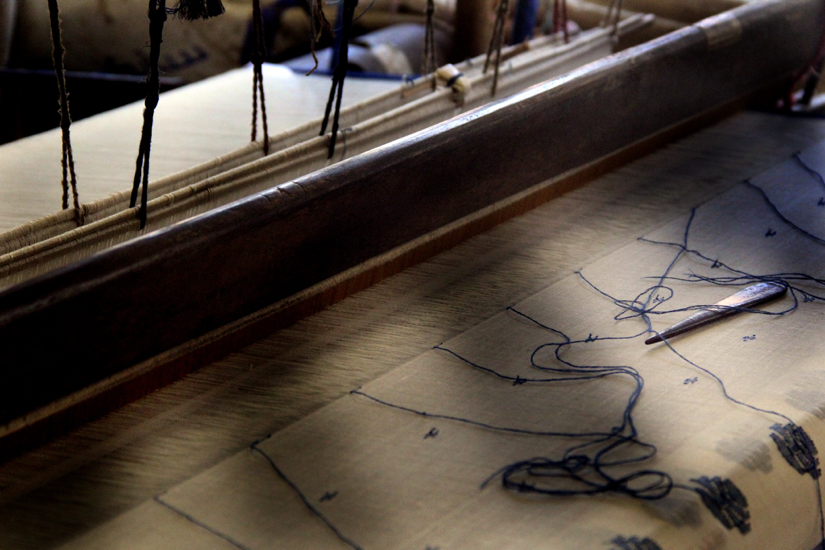
Figure 4: Motifs are sewn between the meeting places of the warp and the weft. Jamdanis are usually woven in soft shades of fine grey cotton, incorporating blue-grey or sometimes with cream-white coloured designs, comprising flowers in ‘bhutidar’ style (set all over) or ‘tircha’ (run diagonally) (Bhatnagar, no date).
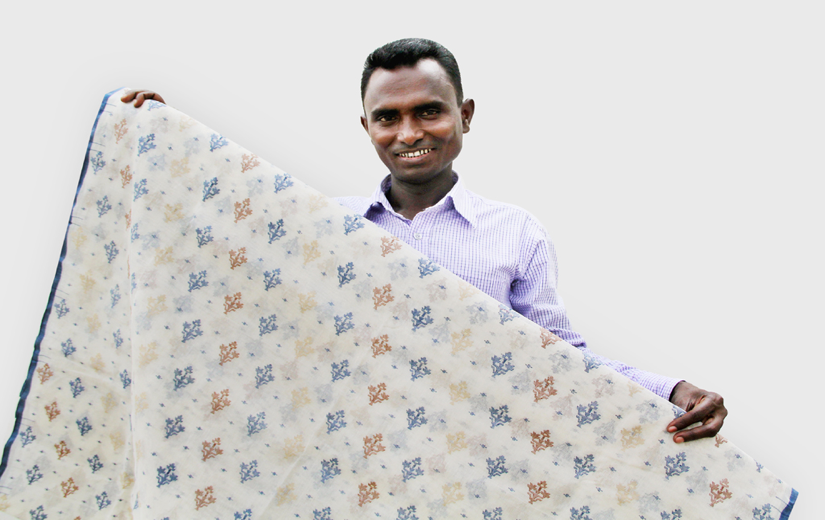
Figure 5: Master-weaver Jabbar, displaying the final fabric, decorated in the bhutidar style.
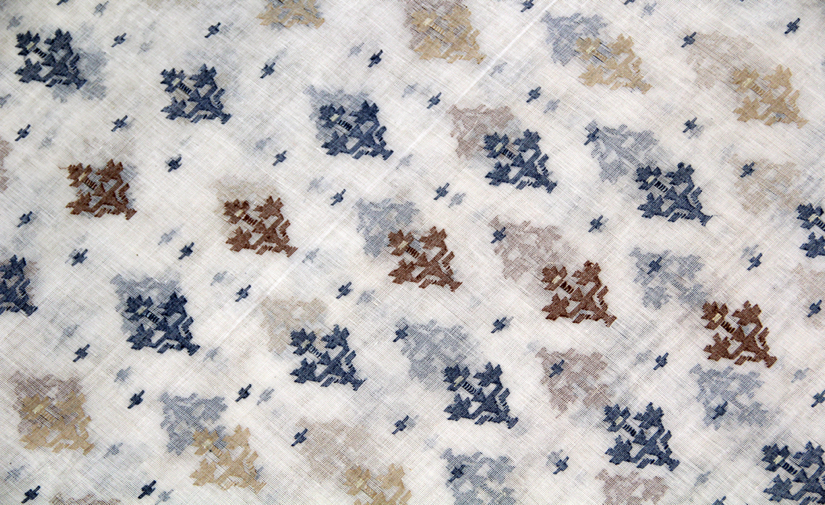
Figure 6: Detail of the Jamdani’s motif, a ‘Puratan Bhuti’ (ancient print) pattern. This, and another cloth were created specially for this project.

Figure 7: The Jamdani cloth on the studio table at LCF. The two cloths each had a different design: ‘Bhager Phara’ (tiger’s footprint) on top of one incorporating a ‘Puratan Bhuti’ (ancient print) (see Figure 6).
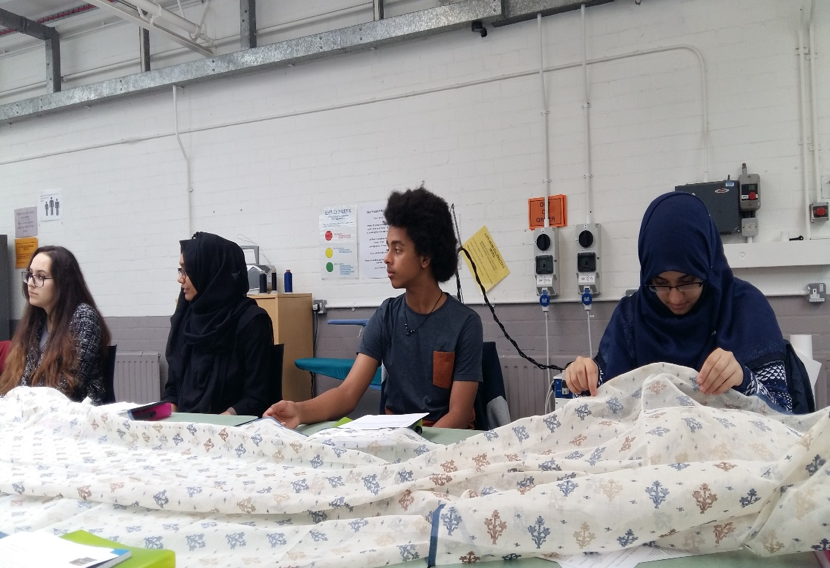
Figure 8: Students meeting for the first time and experiencing what it is like to work at LCF’s studios. They learnt about where the fabric came from and handled the specially woven cloth.
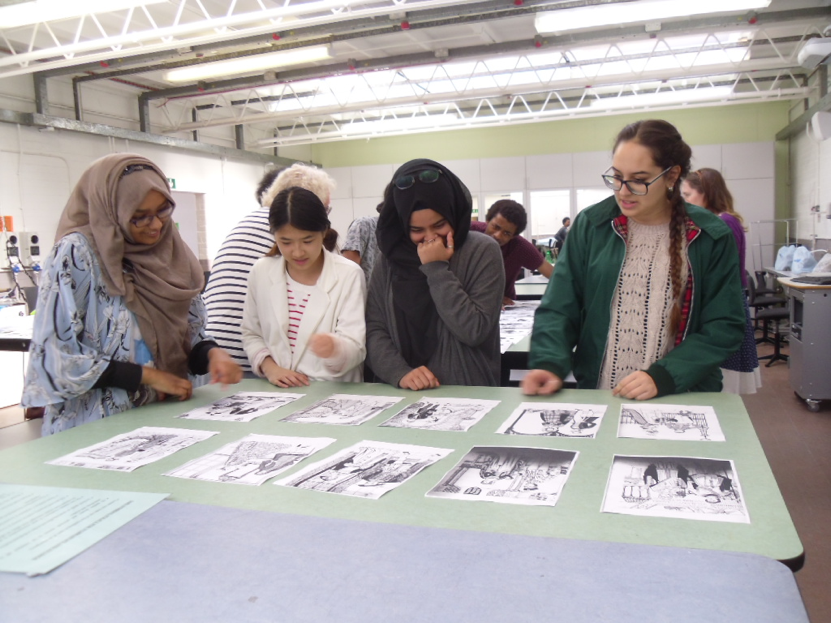
Figure 9: Students got to know each other through group discussions, during which they critiqued historical and cultural inspirations and viewed Regency evening gown designs.

Figure 10: Tutors and students worked together on dress ideas.
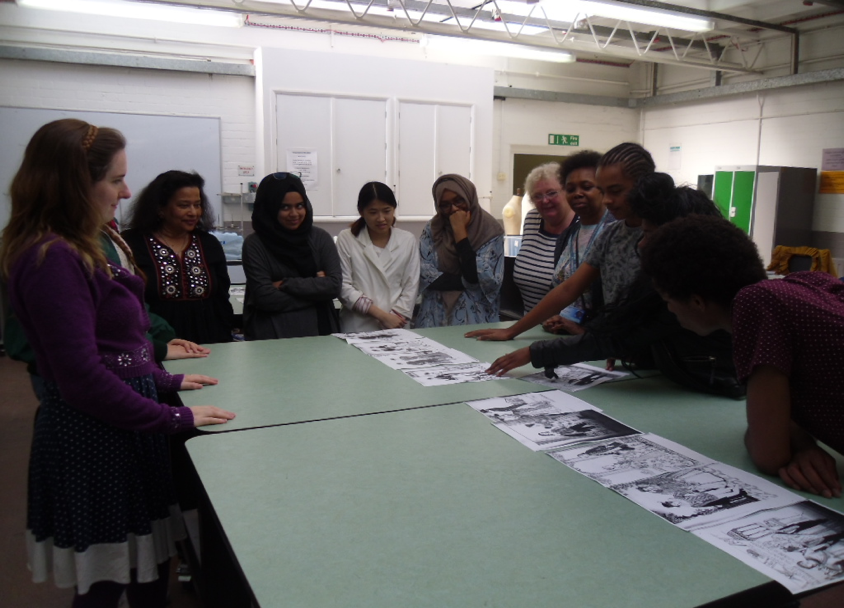
Figure 11: The tutors encouraged students to provide feedback, which allowed for collaborative, further development of their initial ideas.
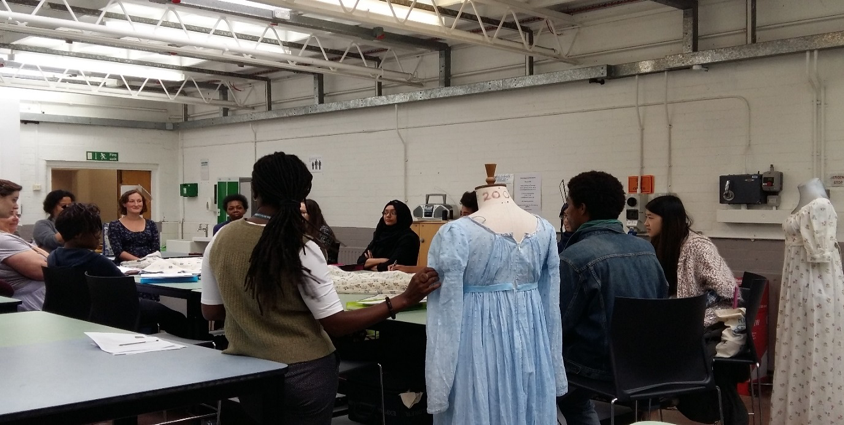
Figure 12: Students and tutors at the LCF studios in Mare Street. In this session they learnt about the use of muslin during the ‘Jane Austen’ era. Students had the opportunity to touch, feel and explore the stitching of two Regency style dresses made out of muslin. The garments were created as part of a project run by the Brick Lane Circle and Stepney Trust entitled ‘How villages and towns in Bengal dressed London ladies in the 17th, 18th and early 19th centuries’ (2013).
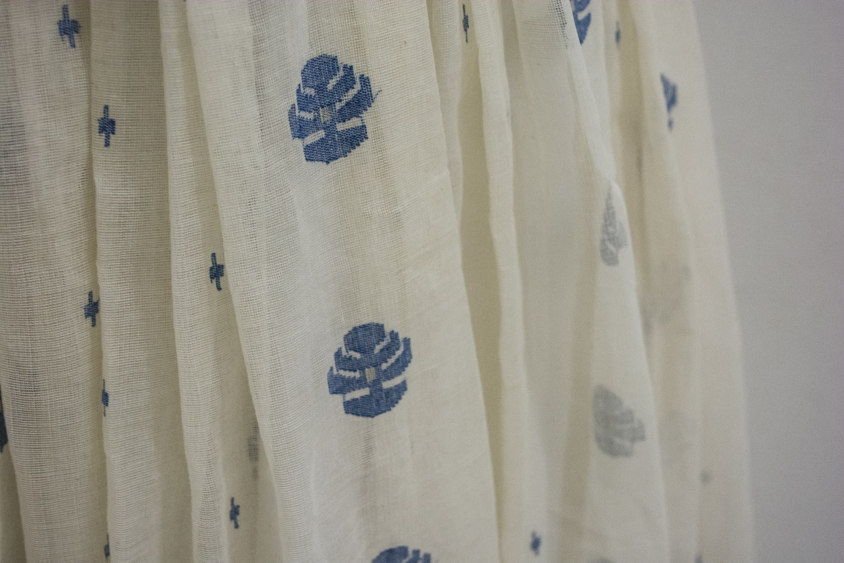
Figure 13: Making the dresses, hand-stitched pleats.
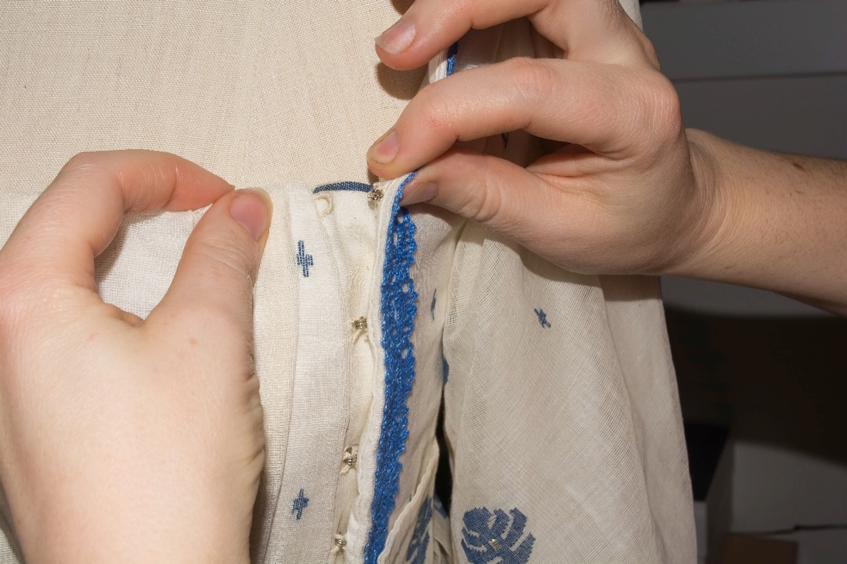
Figure 14: Making the dresses, hand-stitched back hook details.
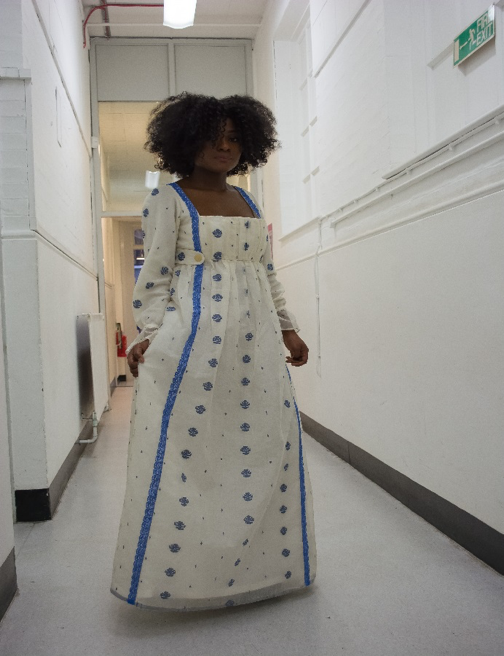
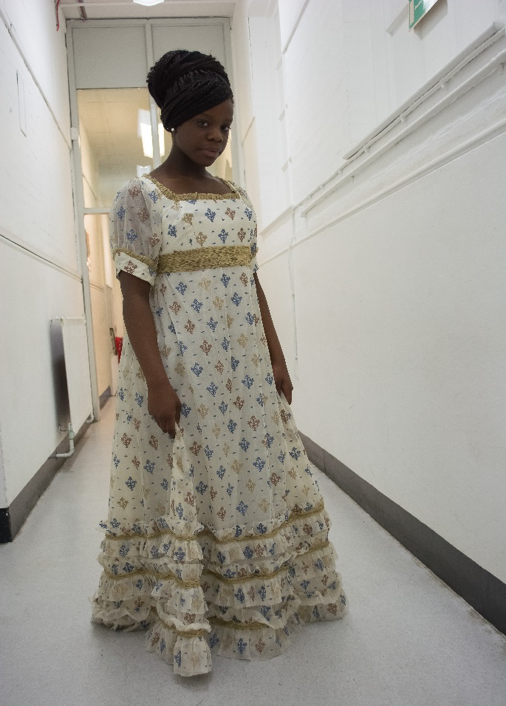
Figures 15 and 16: The final evening gowns, modelled by students who worked on the project.
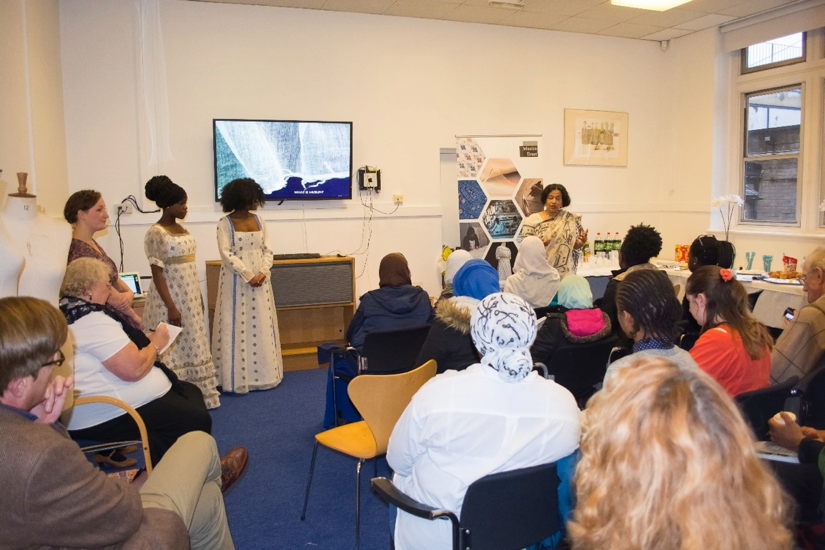
Figure 17: The reception at LCF, Mare Street. This final event celebrated the project. We served Bengali snacks, had performances of Bengali music, a presentation on muslin by Rifat Wahhab chair of The Muslin Trust and the dresses were modelled for friends, family and tutors.

Figure 18: At the reception, the students who participated in the project received certificates. One student commented on being delighted to ‘receive my own sewing kit and working with different ages in a studio’ and another student said he particularly ‘enjoyed learning how to do the back-stitch’.
The project has provided an opportunity for young people to learn about the skills involved in historical sewing techniques and working with Jamdani. Participating in the project has helped them acquire transferable skills and improve their chances of future employment in their chosen fields. They have also enhanced their learning portfolios, which will assist with their entry into higher education in the longer term.
Special thanks to the photographers: Nurun Nahar Nargis, Muhammed Ahmedullah and Dominic Chevidan.
The Jamdani Project has been made possible by the efforts of the following people:
Project participants: Sabrina Begum, Humaydah Fabiha, Tayeb Grace, Sara Hilmi, Kai Johnson, Rumali Khan, Gloria Massamba-Lutama, Sindy Nguyen, Sonia Obasogie.
Tutors: Eleanor Bell, Elizabeth Callow, Felicity Westmacott.
The Muslin Trust, Rifat Wahhab (Chair), Dr Sonia Ashmore, Dr Lipi Begum, Ruby Ghuznavi, Sabina Khan, Saif Osmani, Bruce Sheppy.
Special thanks to: Drik (Bangladesh), Carole Morrison (Outreach Manager, LCF) and Sheron Williams (Technician, LCF).
Ashmore, S. (2012) Muslin. London: V&A Publishing.
Bassett, L.Z. (2001) Textiles for clothing of the early republic, 1800-1850: a workbook of swatches and information. Arlington, Va: Q Graphics Production.
Bhatnagar, P. (no date) Sari-Tangail and Jamdani. Available at: http://www.academia.edu/373055/Sari-Tangil_and_Jamdani (Accessed: 11 December 2015).
East End Life (2015) ‘New project from Bengali east end heritage society’, (1087), 23–29 November, p. 19. Available at: http://ebook-tm.s3.amazonaws.com/East_End_Life_23Nov2015/index.html#/1/ (Accessed: 17 November 2015).
Kennedy, R. (ed.) (2002) The silk road: connecting cultures, creating trust, Smithsonian Folklife Festival held at the Smithsonian Institute, Washington (USA) 2002 [programme guide].
Stepney Community Trust (2013) How villages and towns in Bengal dressed London ladies in the 17th, 18th and early 19th centuries. Available from: http://www.stepney.org.uk/heritage-bengal-to-london-fashion.html (Accessed: 17 December 2015).
Turner, D. (2015) ‘Young designers celebrate creating historic gowns’, Hackney Today (368), 30 November, p. 21. Available at: http://www.hackney.gov.uk/Assets/Documents/368.pdf (Accessed: 17 December 2015).
Dr Lipi Begum is subject leader in fashion marketing and branding in the Fashion Business School at LCF. She also works as a consultant for LCF’s International Partnerships and Development team and has designed and delivered sustainable fashion marketing and branding workshops in Bangladesh, Paraguay, Uzbekistan and India. Her research interests include: sustainable and inclusive fashion and design education; international marketing strategies; south Asian creative industries; and gender and youth cultures.